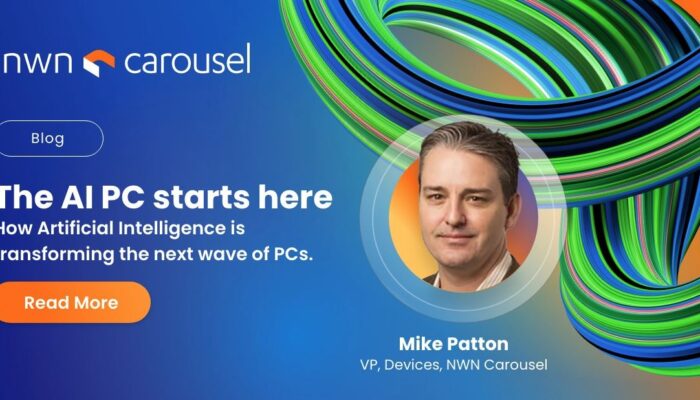This week we talk devices. The troubled microchip supply chain is putting many devices on back order, as well as bottlenecks with continued shipping delays. As IT and HR leaders plan what their workspaces will look like in the post-pandemic world, they are confronted with challenging questions: Will they reopen offices? How much ongoing remote work, if any? If they choose a hybrid work — what’s the right balance?
No matter the work setup, we expect a continued high demand for PCs and other devices as well as technologies to monitor and manage performance and network experience for those devices. While there’s a combo of reasons for the shortage and shipping problems, the impact on business is clear. It can be difficult to procure devices and Wi-Fi access points. Working with a partner such as NWN Carousel provides key advantages. To name one major edge, we have deep relationships with major manufacturers, so we can help businesses source in-stock devices.
Our popular blog series, “Six Technology Predictions for 2022” focused on trends around Cloud, Data, Cybersecurity, AI, and more.
By rethinking strategies from on-prem to cloud, reprioritizing IT spend from OpEx to CapEx, and honing collaborative efficiencies, we earned high marks for accuracy on our first half predictions.
Most C-Suite executives spent 2021 adjusting to the radical changes prompted by the events of 2020. In the first half of this year, as global supply chain disruptions continue and inflation rises, CIOs must continue to find ways to overcome delays in shipping and increased pricing for IT hardware, services, and talent.
Let’s take a look back at our predictions on Device-as-a-Service.
1H Predictions – Hit a Home Run
With the understanding that a digital transformation will only speed up for the remainder of the year, what did NWN Carousel experts correctly predict in 2021 and where did we fall short?
Read on for Part V 2022 Recap Predictions. Stay tuned for future insights!
Unlocking the Future of Device-as-a-Service – Score A
Our Prediction
We expect a continued high demand for PCs and other devices as well as technologies to monitor and manage performance and network experience for those devices. Most employers are not prepared to implement modern device management, which is driving strong interest and growth in a Device as a Service (‘DaaS’) model.
“Customers are saying, ‘We’ve gotten over the initial hump, but now how do we enable our workforce to succeed in this new environment?’ It’s moving into a more mature optimization phase,” “We’re not just providing the management of the device fleet, we’re also providing secure end-user support combined with EMP for the overarching management layer,”
Greg Konig
Vice President – Devices, NWN Carousel
What Experts Say
“For IT departments grappling with the cat-herding chaos that device management can be, an as-a-service model offers some attractive advantages,” according to NTT Data. “One trend driving the move to DaaS is employees’ heightened expectations of the technologies they use for work. As consumers, they’re accustomed to the seamless simplicity of Google, Amazon, Apple and other digital experiences. And they’re demanding the same level of convenience and functionality from their employers.”
Our Score – B
There will also be continued interest in better analytics tools to evaluate the end-user experience. Many organizations have their collaboration tools in place and now need to learn how to manage the end-user experience, including ways to identify shortcomings and improve overall reliability. This is not just for device health and performance, but for an overall end-user experience by translating trend information into meaningful actions to improve end-user productivity.
Read the PREVIOUS installment of “2022 Technology Predictions” focused on Visual Collaboration. Sign up for the last blog installment of “2022 Technology Predictions” focused on Operate at Scale in a SASE Model.



